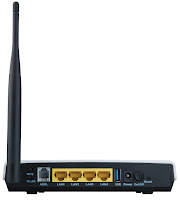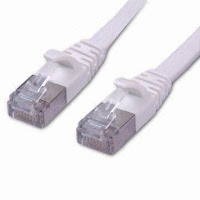Raspbian OS [using VNC Server].
This is 4th post on Raspberry Pi tutorial.
If you want the list of posts click here.
We have learned a little bit about Raspberry Pi, we have installed OS into the SD card and its ready to be booted up, we have seen two methods of setting up raspberry pi. The first method is pretty simple just connect all the peripherals and power up the board. The second method is little tricky but its cheap and easy way of setting up the Pi, all we need is a Ethernet LAN Cable. So lets begin.
- Download this two applications on your computer desktop/Laptop
- Putty [For Windows]:- http://www.putty.org/
- VNC Viewer [For Windows] :- https://www.realvnc.com/download/viewer/
- After downloading this on your computer lets begin with the connections.
- First you must understand that we have two ends of the LAN cable one obviously will be connected to the Raspberry pi's Ethernet port and other ? well we have two options here, connect it to the Router or connect it to the PC's/laptop's Ethernet port


- Now depending upon how you connect there are few possibilities :-
- Router :- This is the best option. You will connect the Raspberry Pi to the Router with LAN cable. The Computer/Laptop is already connected to the router and the Internet LAN wire is also connected to the router. So each device is connected to internet as well as each other :)
- Computer :- CPU just has one Ethernet port so if you connect the Raspberry Pi, the connection between them will be established. Now if you want internet access then you will have to connect the WiFi dongle or Internet Data Card to either your computer or raspberry pi and configure it for internet access.
- Laptop :- The above is true for laptop also. Just one extra thing, laptop has a inbuilt WiFi module, so you can access the internet through this. [You need to configure your connection to access Internet this way].
Raspberry Pi's IP Address when connected to Router :-
- Connect the Ethernet LAN Cable and establish the connections, give power to the Raspberry Pi through the mini USB port. [5V & 1A Adapter or the Raspberry Pi Adapter].
- Your Raspberry Pi will now boot up. While booting up the red and green LEDs on the board will blink continuously and when the green LED stops blinking it indicates that booting is complete.
- Now you need to find the IP Address of the Raspberry Pi. The easy way is using the IP Scanner software. Download it here.
- Using that software get the IP address of your Raspberry Pi. If you don't have the software and still you need the IP here is what you can do
- Go to the routers login page e.g. :- 192.168.0.1
- Log in to your router and go to advance settings and then click on LAN setup.
- Scroll down and you will see list of all the devices connected to your router. Note down the IP address of the Raspberry Pi
click to enlarge
click to enlargeRaspberry Pi's IP Address when connected to Laptop/Computer directly :-
- If you don't have a router and you are directly connecting Raspberry Pi to Computer/Laptop click here.
- Follow the above post & then continue :)
Steps to be followed after acquiring Raspberry Pi's IP address :-
- Once you have the Raspberry Pi's IP address, open up putty and enter the IP address and click Open. [The port by default is kept 22, don't change it].
 |
| click to enlarge |
- It will pop up a window and tell you that do you trust the connection and stuffs... just hit yes.
- Now enter the login username as 'pi' & password as 'raspberry' [this are default]. Note:- You won't see anything while typing password. It's a Linux security trick.
 |
| Click to enlarge |
- That's it !! You have successfully booted up the Raspberry Pi and logged in to the Raspberry Pi. You can now do stuffs with the Raspberry Pi terminal such as update your OS, install/uninstall packages, shutdown/reboot your Pi etc...
- NOTE:- This is a Linux Terminal so the commands differ from the normal windows commands. Just one tip, Don't mess up :-P because changes you make here are actually happening inside the Raspberry Pi's OS, so handle with care.
So this is it ? Will I have to deal with the terminal the whole time ? No GUI ? Nothing like windows, Linux desktop to interact with ?
No this is not the end of this, check the first pic of the post. You can see the RPi desktop over there. This means we have a GUI, a Linux based GUI to deal with.
How to reach there ? check the next post :)
IT IS HIGHLY RECOMMENDED TO VISIT THE NEXT POST IMMEDIATELY BEFORE YOU DEAL WITH THE TERMINAL AND MESS THINGS UP.
IT IS HIGHLY RECOMMENDED TO VISIT THE NEXT POST IMMEDIATELY BEFORE YOU DEAL WITH THE TERMINAL AND MESS THINGS UP.
Visit the next post 'Booting Up the Raspberry Pi - The Easy Way [Part 2]'.
Like My Facebook Page :- https://www.facebook.com/VirajShelkeOfficial
Doubts and suggestions are welcomed in the form of comments.
Thank you for reading.
Doubts and suggestions are welcomed in the form of comments.
Thank you for reading.
Follow my blog & stay tuned :)





Posting Komentar